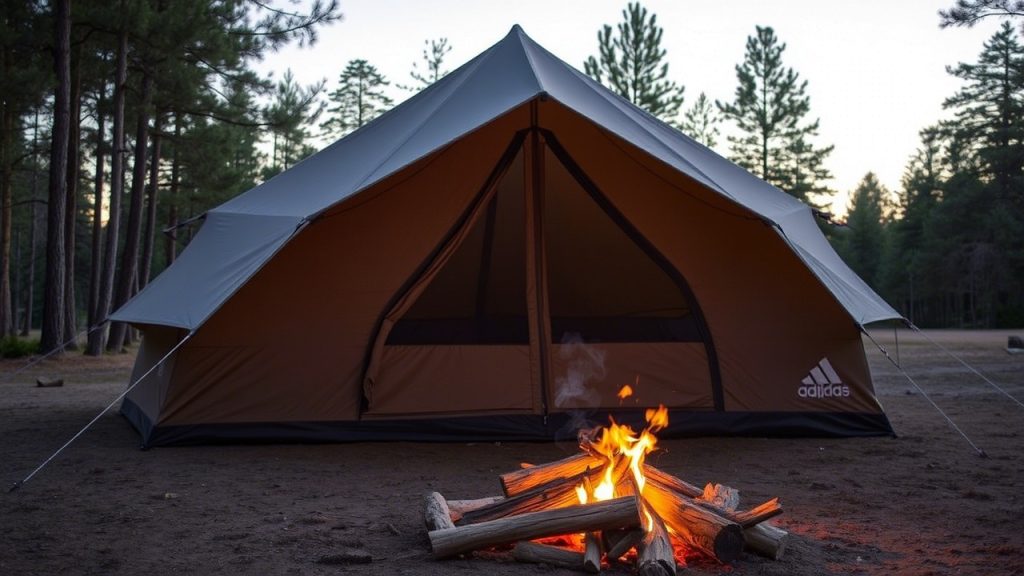Backpacking is a journey into the wild, where your tent is your sanctuary against the elements. A heavy, cramped, or poorly designed tent can sap your energy and dim your adventure. Upgrading your tent is one of the quickest ways to transform your backpacking experience, slashing pack weight, boosting comfort, and simplifying setup.
We’ve handpicked the 8 best tents to upgrade your backpacking gear fast for 2025, emphasizing lightweight, durable, and user-friendly 3-season tents perfect for spring, summer, and fall. Drawing from expert testing by Outdoor Gear Lab, Switchback Travel, and REI, plus real-world user feedback, these tents excel in weight, livability, and weather resistance.
We’ve also included a new section on choosing the right tent, expanded tips, and nine detailed frequently asked questions to ensure you hit the trail prepared.
Why Upgrade Your Backpacking Tent?
Your tent is the heart of your backpacking setup, shielding you from rain, wind, bugs, and chilly nights while offering a cozy space to recharge. An outdated or subpar tent can burden you with extra weight, leaks, or frustrating setup, turning a dream trip into a slog. A modern tent upgrade delivers:
- Ultralight Design: Tents under 3 lbs. let you hike farther with less fatigue.
- Enhanced Comfort: Spacious interiors, vestibules, and smart storage make long trips enjoyable.
- Quick Setup: Intuitive pole systems or trekking pole designs save time, especially in storms.
- Superior Weather Protection: Advanced fabrics and robust poles handle rain and wind without adding bulk.
Whether you’re tackling a weekend getaway or a months-long thru-hike, a new tent elevates your backcountry game. Our picks focus on 3-season tents weighing under 5 lbs., ideal for solo hikers, couples, or small groups. Let’s explore the top 8 tents to revolutionize your gear.
How to Choose the Right Backpacking Tent
Before diving into our picks, consider these factors to find the perfect tent for your needs:
- Group Size: Solo hikers can opt for 1-person or snug 2-person tents; couples need 30+ sq. ft. for comfort. Upsize by one person for extra space (e.g., a 2P tent for one).
- Terrain: Freestanding tents suit rocky or uneven ground; non-freestanding tents need soft soil for staking but save weight.
- Weather: Prioritize full rainflies (1200mm+ waterproofing) and strong poles for rainy or windy regions like the Pacific Northwest.
- Trip Length: Ultralight tents (1–2 lbs.) shine for long hikes; slightly heavier models (3–5 lbs.) offer durability for shorter trips.
- Packability: Look for compact packed sizes (under 20 inches) to fit in your pack.
- Ventilation Needs: Mesh-heavy tents excel in warm, humid climates; less mesh suits cooler, wetter areas.
- Budget vs. Durability: High-end tents use premium materials for longevity; budget options are heavier but reliable for occasional use.
Test your tent in your backyard or a local park to ensure it meets your expectations for setup, space, and comfort before hitting the trail.
Top 8 Tents to Upgrade Your Backpacking Gear
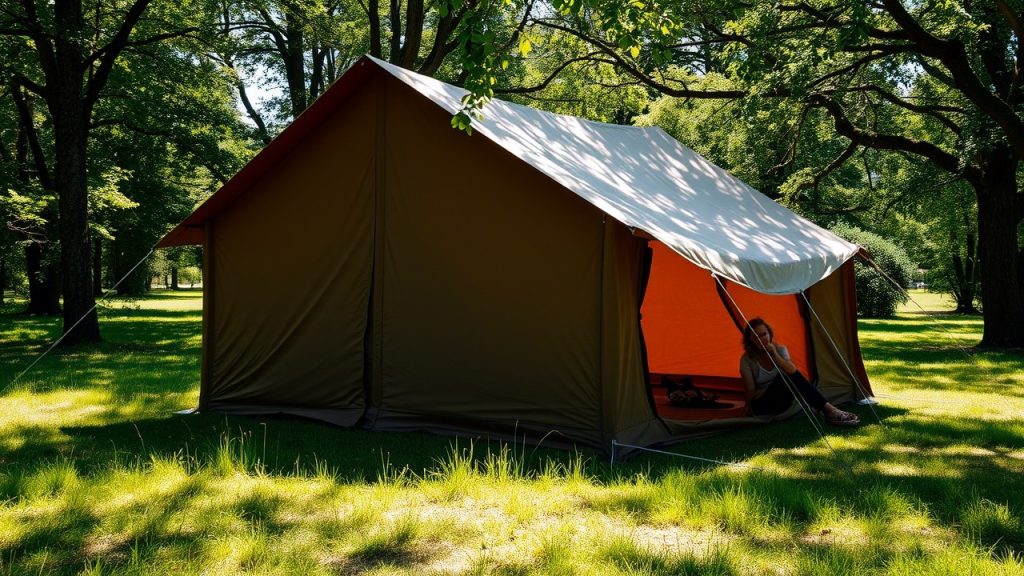
1. Big Agnes Copper Spur HV UL2
- Best for: Ultralight duo backpacking
- Capacity: 2-person
- Key Features: 2 lb 11 oz, 29 sq. ft. floor, 20D ripstop nylon, DAC Featherlite NSL poles, two doors, 18 sq. ft. vestibules
- Why We Love It: The Copper Spur HV UL2 is a flagship ultralight tent, blending featherweight construction with livability. Its 29 sq. ft. floor and 40-inch peak height offer ample space for two, while pre-bent DAC Featherlite poles create near-vertical walls for extra headroom. The 20D ripstop nylon rainfly (1200mm PU coating) and 15D floor handle rain and abrasion, tested on muddy Pacific Crest Trail sections. Two doors and 9 sq. ft. vestibules per side ensure easy access and gear storage, with eight internal pockets and a gear hammock for organization. Setup takes 3–5 minutes with color-coded clips, perfect for rainy evenings. Testers praise its wind resistance (30 mph) in Wyoming’s Wind River Range, though the thin floor pairs best with a footprint for rocky terrain. Ideal for long-distance hikers seeking luxury without weight.
2. Nemo Hornet Osmo 2P
- Best for: Solo or minimalist duo hikers
- Capacity: 2-person
- Key Features: 2 lb 1 oz, 27.5 sq. ft. floor, Osmo poly-nylon fabric, DAC Featherlite NFL poles, one door, 7.1 sq. ft. vestibule
- Why We Love It: The Hornet Osmo 2P is a solo hiker’s dream, weighing just over 2 lbs. Its proprietary Osmo poly-nylon fabric (1200mm waterproofing) is PFAS-free, stretches 25% less when wet, and maintains tautness in rain—proven in Oregon’s soggy Coast Range. A single wishbone pole system allows a 3-minute setup, even for novices, and the 27.5 sq. ft. floor with 39-inch peak height fits one comfortably or two snugly. The 7.1 sq. ft. vestibule and internal pockets store essentials, while FlyBar clips boost interior volume. Users love its stability in Colorado Rockies winds, but careful venting is needed to manage condensation in humid climates. Perfect for ultralight hikers prioritizing weight over space.
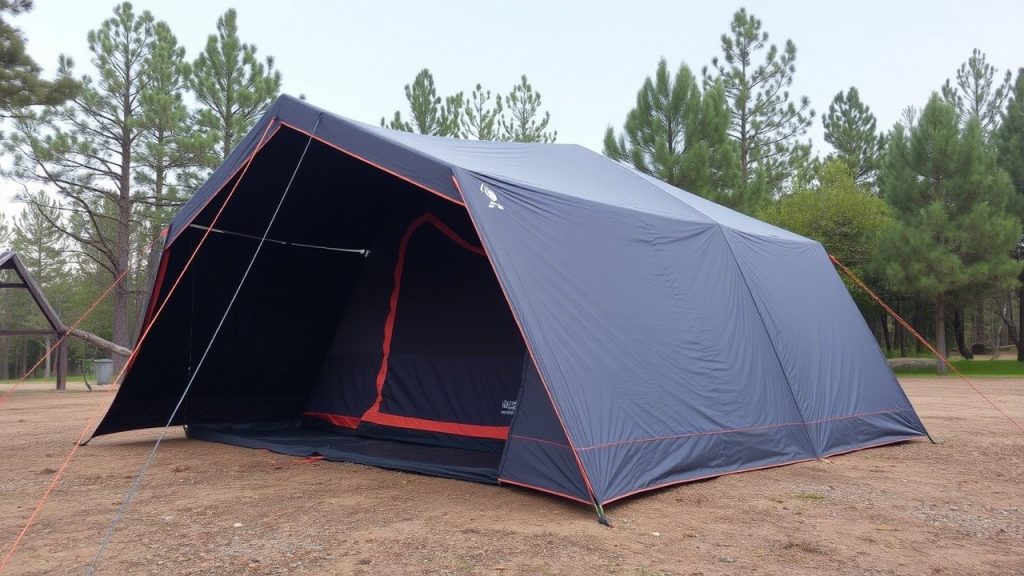
3. REI Co-op Half Dome SL 2+
- Best for: Budget-conscious backpackers
- Capacity: 2-person
- Key Features: 4 lb 13 oz, 33.8 sq. ft. floor, 40D ripstop nylon, aluminum poles, two doors, 22.5 sq. ft. vestibules
- Why We Love It: The Half Dome SL 2+ delivers premium features at a budget-friendly weight. Its 33.8 sq. ft. floor and 44-inch peak height feel spacious for two, with pre-bent aluminum poles maximizing headroom via near-vertical walls. The 40D nylon rainfly (1500mm) and 70D floor withstand rain and rough ground, tested on gravelly Adirondack trails. Two doors and dual 11.25 sq. ft. vestibules simplify entry and gear storage, while four internal pockets and gear loops keep things tidy. Setup takes 5–7 minutes with color-coded poles, ideal for beginners. Testers commend its durability in mild Pacific Northwest storms, though it’s heavier than ultralight rivals. You can shave 8 oz. by ditching the footprint on soft terrain. Great for weekend warriors seeking value and comfort.
4. Zpacks Duplex Lite
- Best for: Ultralight thru-hiking
- Capacity: 2-person
- Key Features: 1 lb 2 oz, 28 sq. ft. floor, Dyneema Composite Fabric (DCF), trekking pole setup, two doors, 21.2 sq. ft. vestibules
- Why We Love It: The Duplex Lite is a thru-hiker’s holy grail, weighing a mere 18 oz. thanks to waterproof DCF, which resists sagging in rain—proven on the Appalachian Trail’s wettest sections. Its trekking pole setup (4 stakes, 3–5 minutes) requires practice but saves weight, and the 28 sq. ft. floor with 48-inch peak height suits tall hikers. Two 10.6 sq. ft. vestibules store packs, and 360-degree mesh ensures ventilation in humid climates like the Smoky Mountains. Testers rave about its storm-worthiness (40 mph winds), but the delicate DCF demands gentle handling on rocky sites. Ideal for long-distance hikers willing to master non-freestanding pitching.
5. MSR Hubba Hubba LT 2
- Best for: All-around performance
- Capacity: 2-person
- Key Features: 2 lb 14 oz, 30 sq. ft. floor, 20D ripstop nylon, Easton Syclone poles, two doors, 17.4 sq. ft. vestibules
- Why We Love It: The Hubba Hubba LT 2 is a versatile workhorse, balancing weight and durability. Its 30 sq. ft. floor and 40-inch peak height accommodate two comfortably, with Easton Syclone poles resisting bending in 40 mph gusts—tested in Utah’s windy canyons. The 20D nylon rainfly (1200mm) and 20D floor handle rain and abrasion, while two 8.7 sq. ft. vestibules and a gear loft organize gear. Setup is intuitive (4–6 minutes) with a unified hubbed pole system, perfect for quick pitches in rain. Users praise its livability on multi-day Sierra Nevada trips, though condensation requires venting in humid conditions. Suited for hikers seeking reliability across varied terrains.
6. Tarptent StratoSpire Ultra
- Best for: Versatile ultralight camping
- Capacity: 2-person
- Key Features: 2 lb 5 oz, 32 sq. ft. floor, Ultra TNT composite fabric, trekking pole setup, two doors, 20 sq. ft. vestibules
- Why We Love It: The StratoSpire Ultra uses Ultra TNT fabric—a lightweight, waterproof composite—for a durable yet ultralight shelter. Its 32 sq. ft. floor and 46-inch peak height offer generous space, and two 10 sq. ft. vestibules double as storage or cooking areas. The trekking pole setup (6–8 stakes, 5 minutes) is non-freestanding but stable in 40 mph winds, as tested in Iceland’s highlands. Pitchlock corners and adjustable guylines simplify tensioning, and extensive mesh ensures airflow in warm, wet climates like the Ozarks. Testers love its spaciousness, but it requires soft ground for staking. Perfect for ultralight hikers tackling diverse conditions.
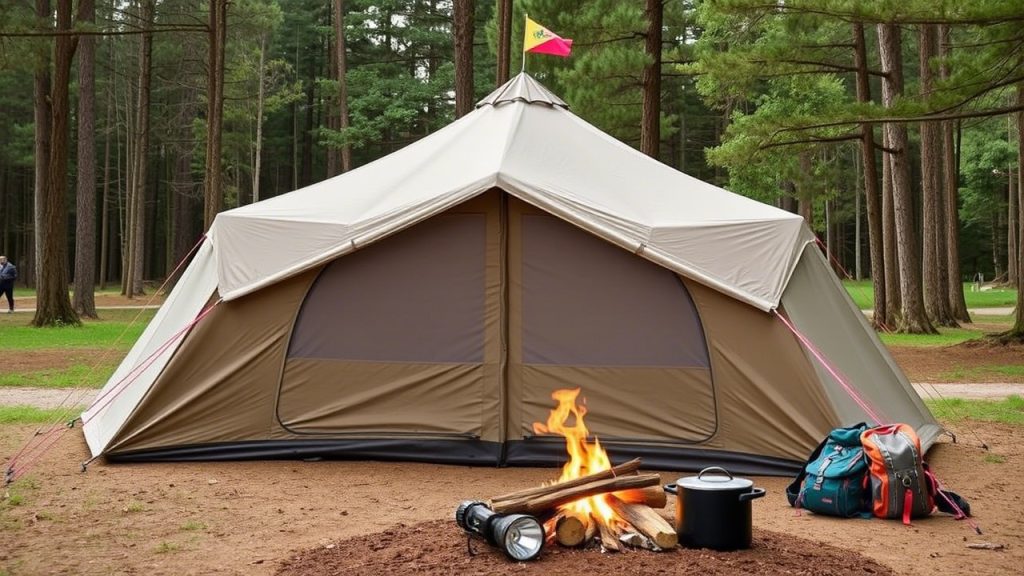
7. Six Moon Designs Lunar Duo
- Best for: Budget ultralight space
- Capacity: 2-person
- Key Features: 2 lb 13 oz, 40 sq. ft. floor, 20D silicone-coated polyester, trekking pole setup, one door, 18 sq. ft. vestibule
- Why We Love It: The Lunar Duo offers unmatched space for ultralight backpackers, with a 40 sq. ft. floor and 49-inch peak height—ideal for two plus gear or sprawling solo setups. Its 20D polyester rainfly (1500mm) and 40D floor resist rain and rough terrain, tested on rocky Arizona trails. The single-pole setup (6 stakes, 4–6 minutes) is straightforward with practice, and large mesh panels keep it cool in humid climates like the Everglades. The single door limits access for two, but the 18 sq. ft. vestibule stores gear. Testers praise its value for budget-conscious hikers needing room without weight.
8. Durston X-Mid 2
- Best for: Innovative ultralight design
- Capacity: 2-person
- Key Features: 2 lb 3 oz, 32 sq. ft. floor, 20D polyester, trekking pole setup, two doors, 24 sq. ft. vestibules
- Why We Love It: The X-Mid 2’s offset dual-pole design maximizes volume, offering a 32 sq. ft. floor and 43-inch peak height for two. Its 20D polyester rainfly (2500mm) resists sagging in rain, and two 12 sq. ft. vestibules store gear or serve as cooking nooks—proven in High Sierra monsoons. The 4-stake setup (3–5 minutes) uses trekking poles, and magnetic door toggles simplify access. Extensive mesh ensures ventilation in muggy climates like the Shenandoahs, but the rectangular footprint needs larger tent pads. Testers highlight its storm performance and affordability for ultralight enthusiasts.
Expanded Tips for Upgrading Your Backpacking Tent
- Match Tent to Trail: Choose freestanding tents (e.g., Big Agnes Copper Spur) for rocky or sandy sites like Joshua Tree; non-freestanding tents (e.g., Durston X-Mid) for grassy or forested areas like the White Mountains.
- Practice Setup: Master your tent’s pitch in your backyard, especially for non-freestanding models like the Zpacks Duplex Lite, to avoid fumbling in rain or wind.
- Use a Footprint: Protect thin floors (e.g., Nemo Hornet’s 15D) with a custom footprint, Tyvek sheet, or lightweight tarp to prevent punctures on rocky terrain.
- Upgrade Stakes: Swap flimsy stakes for MSR Groundhogs or titanium shepherd hooks for better grip in loose soil or high winds, especially for non-freestanding tents.
- Optimize Ventilation: Open vents during dry spells, store wet gear in vestibules, and use a microfiber towel to wipe condensation in humid climates.
- Pair with Gear: Use a high-R-value sleeping pad (e.g., Therm-a-Rest NeoAir) and a 20°F-rated sleeping bag for 3-season comfort, complementing your tent’s protection.
- Distribute Weight: Split tent components (poles, fly, body) with a hiking partner to balance pack weight, especially for heavier tents like the REI Half Dome SL 2+.
- Check Campsite Regulations: Some parks (e.g., Yosemite) require specific tent colors or sizes; verify rules to avoid fines.
- Test Weather Resistance: Pitch your tent in a rain shower at home to check seams and zippers, ensuring no leaks before a trip.
- Explore Second-Hand Options: Browse REI Used Gear, GearTrade, or Reddit’s r/GearTrade for gently used premium tents like the MSR Hubba Hubba to save money.
- Pack for Accessibility: Keep your tent near the top of your pack for quick setup at camp, especially in unpredictable weather.
- Consider Trekking Poles: Non-freestanding tents (e.g., Tarptent StratoSpire) require sturdy, adjustable poles (e.g., Black Diamond Distance Carbon Z) for reliable pitching.
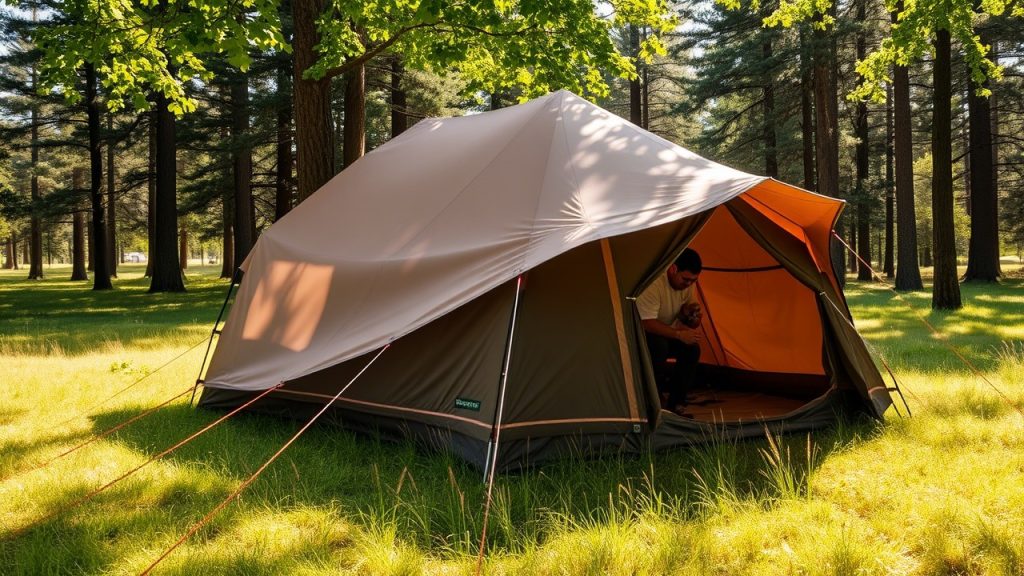
Caring for Your New Backpacking Tent
To ensure your tent lasts 10–20 years:
- Dry Thoroughly: Pitch or hang to dry after trips to prevent mold, especially for DCF tents like the Zpacks Duplex Lite.
- Clean Gently: Use a sponge and Nikwax Tech Wash to remove dirt; avoid machine washing, which damages coatings.
- Repair Promptly: Patch tears with Gear Aid Tenacious Tape, replace bent poles, and fix snagged zippers to prevent worsening damage.
- Store Loosely: Keep in a breathable bag in a cool, dry place to avoid fabric stress or mildew.
- Refresh Waterproofing: Apply Nikwax Tent & Gear SolarProof every 1–2 years to maintain rainfly performance, especially for polyester flies like the Durston X-Mid’s.
9 Frequently Asked Questions About Backpacking Tents
1. What makes a tent ideal for backpacking?
A backpacking tent should weigh 1–5 lbs., use durable fabrics (15D–40D nylon or Dyneema, 1200mm+ waterproofing), and pitch easily (freestanding or trekking pole designs). It needs 28+ sq. ft. for two, 8+ sq. ft. vestibules, and 3-season weather resistance. The Big Agnes Copper Spur HV UL2 shines with its 2 lb 11 oz weight, 29 sq. ft. floor, and storm-ready design for trails like the John Muir Trail.
2. Should I choose a freestanding or non-freestanding tent?
Freestanding tents (e.g., MSR Hubba Hubba LT) use poles to pitch anywhere, ideal for rocky terrain like the Grand Canyon or beginners. Non-freestanding tents (e.g., Zpacks Duplex Lite) use trekking poles and stakes, cutting weight (1–2 lbs.) but requiring soft ground like forest campsites. Pick freestanding for versatility, non-freestanding for ultralight hikes with reliable staking.
3. How light is too light for a backpacking tent?
Tents under 2 lbs. (e.g., Nemo Hornet Osmo) are ultralight but may compromise durability or space, best for experienced hikers in mild conditions. For 3-season use, 2–3 lbs. (e.g., Durston X-Mid 2) balances weight and sturdiness. Sub-1 lb. tents are niche, requiring careful handling of delicate fabrics like Dyneema on trails like the CDT.
4. Why is vestibule space important in a backpacking tent?
Vestibules store wet or dirty gear (packs, boots) outside, keeping the interior dry and spacious. Aim for 8+ sq. ft. per side (e.g., REI Half Dome’s 22.5 sq. ft.). They double as cooking or changing areas in rain, as seen with the Tarptent StratoSpire’s 20 sq. ft. vestibules on wet Olympic Peninsula hikes.
5. How do I manage condensation in a backpacking tent?
Condensation occurs when warm, moist air hits cold walls. Double-wall tents (e.g., Six Moon Lunar Duo) use mesh to separate the rainfly, reducing buildup. Open vents during dry spells, store wet gear in vestibules, and wipe walls with a microfiber towel. Single-wall tents like the Zpacks Duplex Lite need aggressive venting in humid areas like the AT’s southern sections.
6. Are premium tents necessary for backpacking?
High-end tents (e.g., Zpacks Duplex Lite) use ultralight Dyneema or advanced poles, offering durability and weight savings for frequent hikers on long trails like the PCT. Budget tents like the REI Half Dome SL 2+ are heavier (4 lb 13 oz) but reliable for occasional trips in mild conditions. For 10–20 trips yearly, premium tents’ longevity justifies the investment.
7. What’s the best tent size for solo or duo backpacking?
Solo hikers can use 1P tents or snug 2P models (e.g., Nemo Hornet Osmo) for extra space. Couples need 30+ sq. ft. (e.g., Six Moon Lunar Duo’s 40 sq. ft.) for comfort, especially on multi-day trips with gear. Upsizing by one person (e.g., 2P for one) ensures room for sprawling or storing packs inside on rainy nights.
8. How do I ensure my tent is storm-ready?
Choose a tent with a full rainfly (1200mm+ waterproofing), strong poles (e.g., DAC Featherlite), and multiple guyline points (e.g., MSR Hubba Hubba LT). Pitch the narrow end into the wind, use sturdy stakes (e.g., MSR Groundhogs), and test stability by shaking the frame. Tents like the Tarptent StratoSpire Ultra handle 40 mph gusts on exposed alpine routes.
9. How long should a backpacking tent last?
With care—drying thoroughly, cleaning gently, and storing loosely—a quality tent lasts 10–20 years or 100–200 trips. Premium models like the Big Agnes Copper Spur use 20D nylon for durability, while budget tents like the REI Half Dome rely on thicker 40D fabrics. Regular seam sealing and waterproofing (e.g., Nikwax) extend life, even for heavy use.
Conclusion
Upgrading your backpacking tent is a game-changer, lightening your load, enhancing comfort, and simplifying your time on the trail. From the ultralight Zpacks Duplex Lite to the spacious Six Moon Designs Lunar Duo, our 8 picks cater to every backpacker’s needs. Use our guide to choose a tent that matches your terrain, weather, and hiking style, and follow our tips to maximize its performance. With a new tent in your pack, you’re ready to tackle any trail with confidence and ease!

